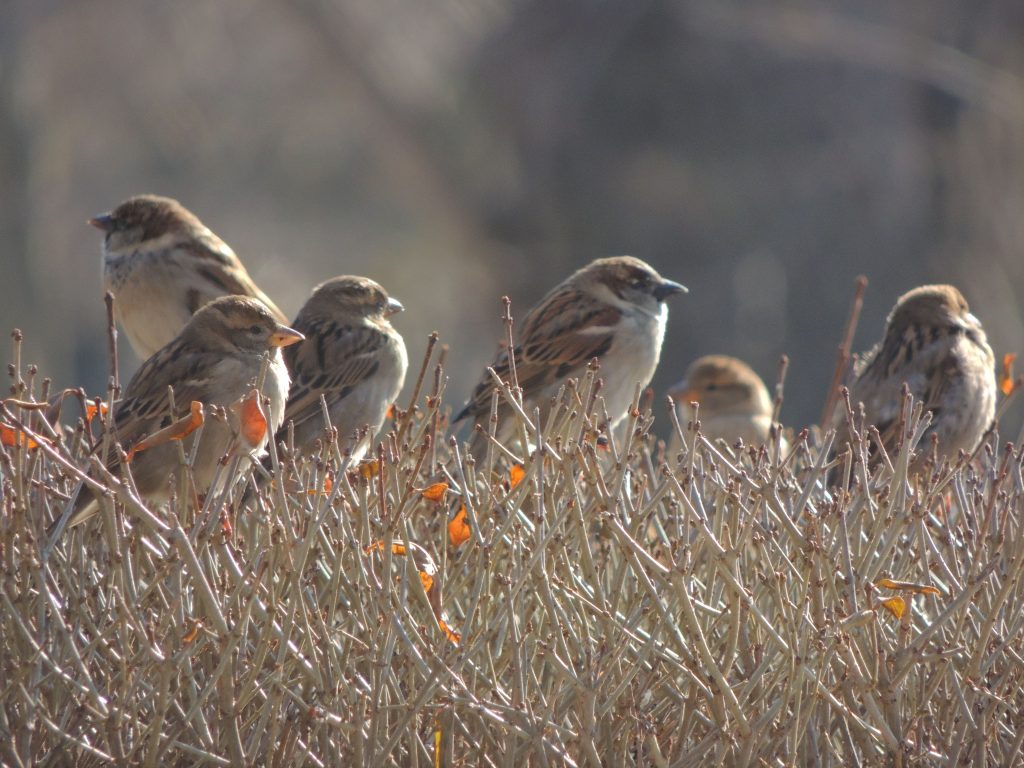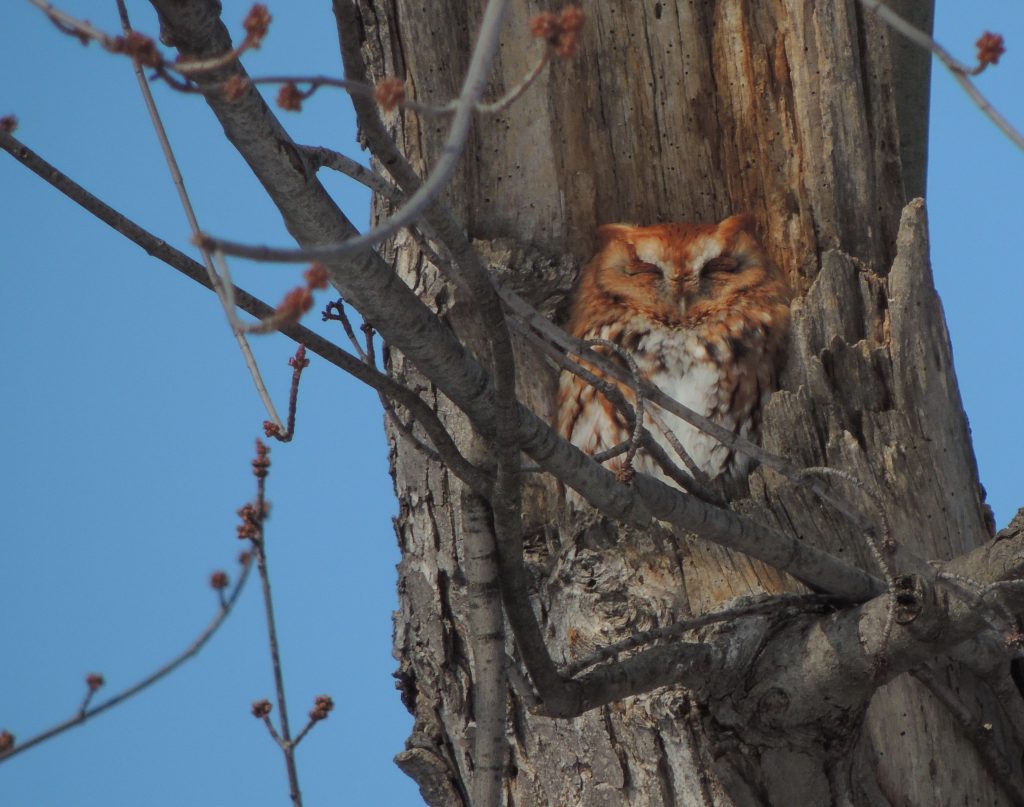February 1 2018. Dundas, ON. A sudden change of plans leaves the month of February open to me for new challenges. Free of major obligations I’ve set myself the goal of hiking a stretch of quite rugged trails, about thirty to forty kilometers in bite-size chunks is what I have in mind.
A decent snowfall two nights ago has made the trail with its uncertain footing and steep slopes out of the question, I opted instead to follow a part of it through an old residential neighbourhood. The strengthening sun had the upper hand today so the roads and sidewalks were dry and clear of ice patches, you couldn’t say it was spring-like, winter is still firmly in the driver’s seat, but you could dream.
My attention was caught by a sudden flurry of bird life and found the attraction was a small, well-loaded feeder. House Sparrows – How dreary I thought. When you weigh up the positives and negatives of House Sparrows you’re really not left with a lot one way or the other; but at least they’re here and they can brighten up a winter day. I took a number of photos, which manage to make them look quite engaging. Engaging enough to be Birds of the Day.

And some will think I have my priorities all wrong for, on my way home, I stopped at a reliable spot to see an Eastern Screech Owl and there it was, making the most of the morning sun. I suppose it should have been Bird of the Day, after all it’s an owl. But lovely though the owl is, I give the recognition to House Sparrows, the unsung foot soldiers of winter.

I believe house sparrows are declining in England. I hope I’m wrong. I wouldn’t want that to happen here.
I’ve heard that too, that their numbers are declining alarmingly. I followed up and found this from the Royal Society for Protection of Birds ” Declines in rural house sparrow populations are thought to be linked to changes in agricultural practices, particularly the loss of winter stubbles and improved hygiene measures around grain stores. House sparrow numbers were not monitored adequately before the mid-1970s. Since then, numbers in rural England have nearly halved while numbers in towns and cities have declined by 60 per cent. Because of these large population declines, the house sparrow is now red-listed as a species of high conservation concern.”
Read more at https://www.rspb.org.uk/birds-and-wildlife/wildlife-guides/bird-a-z/house-sparrow/population-trends#ak9THqpXe0BL6STk.99
When my son was a life guard at a local pool, we rescued several malnourished, flightless House Sparrow young. When I apologized to the rehabilitator for bringing her exotic invasives she said ” They don’t know they’re an invasive species”, which is correct. I still boot the adults out of my nest boxes though. Thank you for the screech owl shot- beautiful.
Exotic invasives indeed. I’m sure we’ve all heard how they and other ‘Birds of Shakespeare’ were first foisted on North America. Many didn’t make it; Chaffinch and European Robin for example, BUT House Sparrows and Starlings have thrived.
So true Peter. We’re so busy chasing the “exotic” that we forget the humble. And a “country” House Sparrow can look very handsome, especially in good sunlight.